Solid Color, Gloss, Fluoresence and Jetness
spectro2guide PRO
Carbon Black is a material with a long history whose production dates to the early civilizations of mankind. Initial uses can be traced back to ancient China, the early Egyptians, and India since the days before Christ. The demand for carbon black was particularly driven by the invention of the printing press in the fifteenth century. Today carbon black is found in all aspects of modern life. It is used in inkjet printer ink, as reinforcements for natural and synthetic rubber and as the active agent in electrically conductive plastics. Probably the widest and best-known application is the usage as a pigment in paints, coatings and plastics to impart a deep black color, because it has higher tinting strength compared to iron black or organic pigments. Means, not all black is the same.
In general, black is a color that results from the absence or complete absorption of visible light. Leading carbon black manufacturers promote carbon black pigments that absorb up to 99.98% of light. The higher the absorption coefficient of a medium, such as a black coating, the higher is the achieved blackness value (My). Deep black coatings can have an undertone – bluish or brownish. A deep black color with a bluish undertone in the full tone is perceived as richer, darker and more brilliant than with a brownish undertone. Two samples with the same blackness (My) and different undertone (dM) can be perceived as different blacks, whereas the sample with blue undertone will be perceived as deeper black. For this reason, black with a blue undertone is often preferred in technical applications, such as for the topcoats in the automotive industry. The hue-dependent degree of blackness is referred to as “Jetness” (Mc).
The calculation for the Blackness value My is based on the Tristimulus Value Y and a 10° Observer:
Blackness My
My = 100 log (100 / Y)
This determines only the lightness of a sample without considering the colored undertone. As the undertone of a black color has an impact on the visual assessment, the hue-dependent degree of blackness is calculated as follows:
Jetness Mc - Color depending black value
Mc = 100*(log(Xn / X)–log(Zn / Z)+log(Yn / Y))
The black value Mc describes higher jetness, if there is a blue undertone and lower jetness, if the shade is more brownish. The difference between the black value Mc and the black value My defines the hue of a black color, the so called Undertone (dM):
Undertone dM - Absolute contribution of hue
dM = Mc – My = 100*(log(Xn / X)–log(Zn / Z)
Undertone dM describes the amount of blue shade in case of positive values and the amount of brown shade in case of negative values.
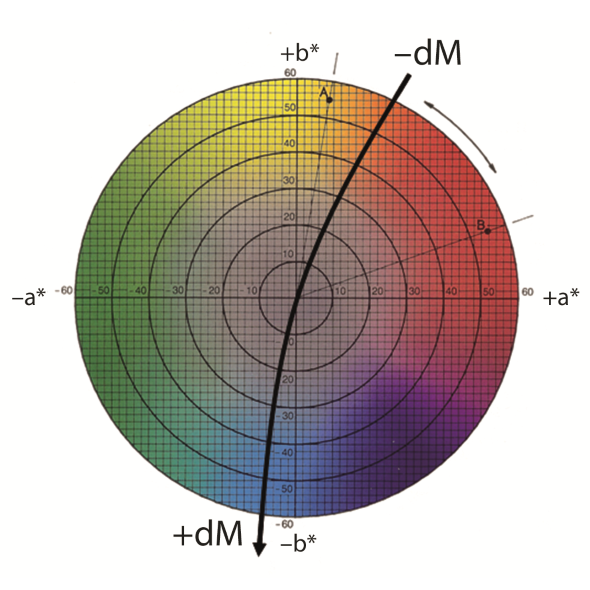
Figure 1: dM Undertone
Blackness (My), Jetness (Mc) and Undertone (dM) are specified in international standards: ISO/DIS 18314-3 and DIN 55979.
It has always been the greatest challenge for a spectrophotometer to achieve repeatable and reproducible results on a black color. While a white sample reflects almost 100 percent of the light emitted by the spectrophotometer, the proportion of reflected light becomes smaller and smaller with darker colors - as increasingly larger amounts of light are absorbed by the sample. Consequently, the so-called "signal to noise ratio" changes with dark colors: The measurement signal decreases while the thermal noise, which is basically caused by electronic components, remains constant. Measurements of innovative, deepest black coatings with very low reflection takes place at a lightness value of L* < 1. This is a challenging task for a measurement instrument and pushes the technical performance of a handheld spectrophotometer to the utmost limit.
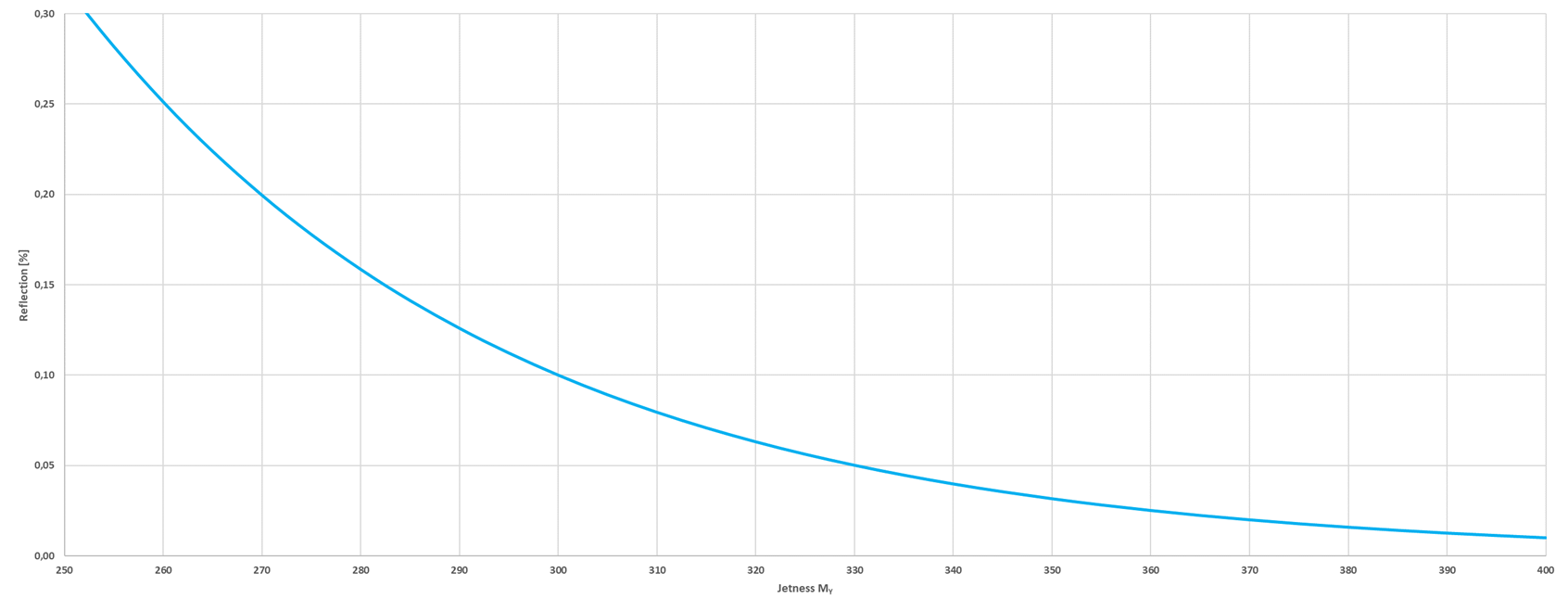
Figure 2: Decreasing Remission with increasing My
The latest member of the spectro2guide family, the spectro2guide Pro, was developed to accurately measure black and describe its undertones no matter how deep black the color might be.
Leading specialists from carbon black pigment manufacturers challenged us in assessing the measurement accuracy with deepest blacks as sample material. The basis for the excellent performance is the use of high-power LEDs as light source, which, thanks to the BYK-specific production control process, provide an exceptional short-term as well as long-term stability and ensure an absolutely homogeneous illumination of the measuring spot., To master the "signal to noise ratio", highest precision electronic and optical components are combined with a special calibration and operation mode for measurement of black colors: LED lamps are powered with more energy resulting in a higher light intensity and the illumination time is extended. In this so called Jetness-mode colors with low black values cannot be measured. The user is asked to remeasure the sample in the “regular” measurement mode and the so-called G-values (Grayness values) will be shown in lieu of M-values. The Jetness indices (M-values and G-values) are defined in DIN ISO 18314-3. Thus, on deep blacks with high light absorbing capabilities, the spectro2guide Pro will be able to deliver a perfectly stable signal with the highest possible accuracy.
a) Samples and Sample Preparation
The spectro2guide Pro was tested on 6 samples “Test 1 - Test 6” with graduated My and dM values. The samples are glass plates painted with high-gloss black. Deep blacks can only be measured on high-gloss and absolutely clean samples. Any contaminants or surface irregularities can have a considerable influence on the measurement results. Due to that, the sample surface must be absolutely free of scratches, fingerprints and dust before measuring. During the test, the sample surface was cleaned with distilled water and lint-free delicate task wipes before the measurement. To guarantee that the sample surface is perfectly prepared, an LED flashlight is included with the spectro2guide Pro. The lamp can be used to assess the quality of the sample surface under strong direct light. A 15 - 45-degree angle of illumination has proven to be most effective.
b) Visual Assessment
The visual assessment was made in the light booth byko-spectra pro with daylight D65 under a 45-degree angle. The byko-spectra pro uses a smart combination of filtered tungsten-halogen lamps and LEDs to simulate D65 resulting in the highest rendering Class A according CIE 51.2. Due to that, the “byko-spectra pro” is ideal for color critical appraisal of solid colors and guarantees accurate color matching according to CIE illuminant D65.
The trained observer can sort the samples by their degree of blackness. The order corresponds to the naming of the samples: Sample "Test 1" is the sample with the lowest blackness value (My) and sample "Test 6" is the sample with the highest blackness value (My), deepest black. The samples "Test 5" and "Test 6" can hardly be separated from each other. Regarding the undertone, sample "Test 5" and "Test 6" are perceived as clearly bluish (dM). Sample "Test 1" appears to have a yellow undertone (dM). The samples "Test 2" to "Test 4" tend to be classified as color-neutral, i.e. without a clear undertone (dM).
c) Test conditions and test execution
Each sample is measured 50 times in immediate succession at the same measuring spot. The spectro2guide Pro is directly connected to the smart-lab Color software, this enables a triggered online measurement via software to minimize the user influence. The measurement data is also analyzed in the smart-lab Color software.
d) Results
The goal of any spectrophotometer is to measure what you see. This goal was successfully achieved during the test. The spectro2guide Pro can sort the samples "Test 1" to "Test 6" in terms of blackness level and Undertone according to the visual assessment. In Figure 3, both the measured black value My and the results for the undertone dM of all test tiles are shown graphically.
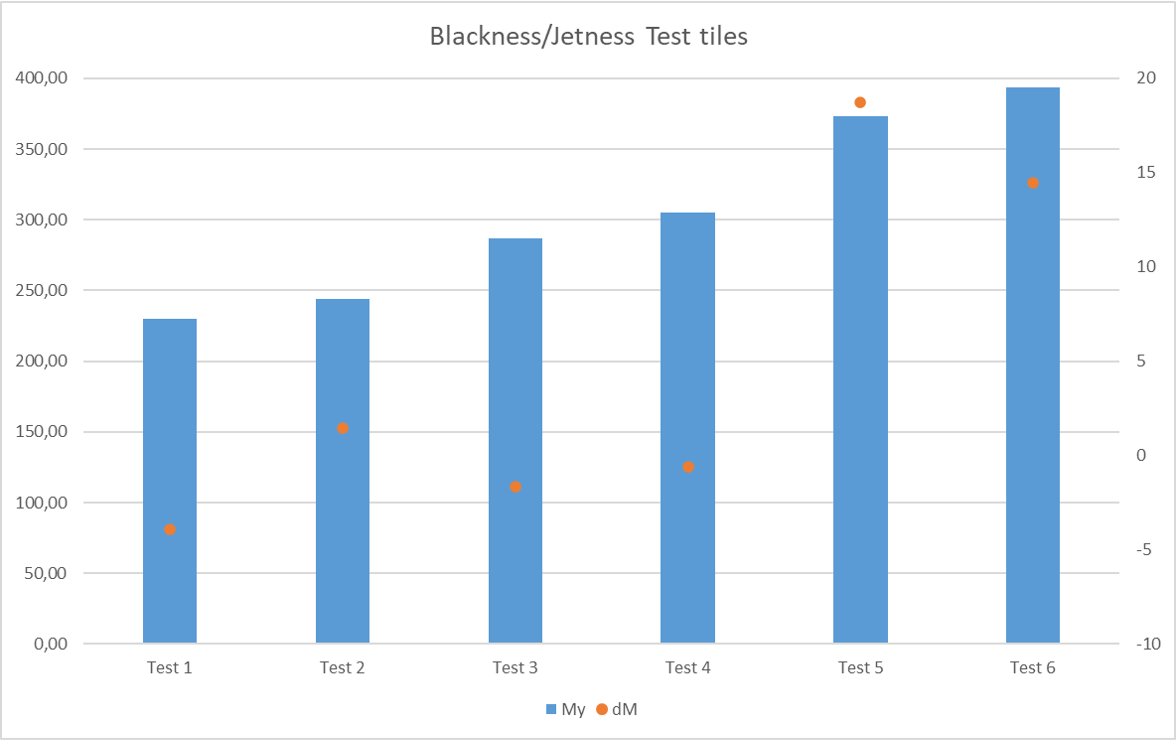
Figure 3: Blackness value My and Undertone dM of Test Tiles 1-6
The measurement reliability can be best judged by analyzing the measurement accuracy meaning the repeatability performance to the spectrophotometer. In the following, the results for sample “Test 6” are presented as an example, as this is the ultimate black being at the upper end of the black scale with My max = 400. Sample “Test 6” achieves an average black value of 393.56, which corresponds to a measured Y of 0.0116 on average. Despite a remission of only 116 parts per million of the incident light, the obtained standard deviation of Y is only 0.0002 (Variance ≙ 0.0172) for 50 measurements. Figure 4 shows the achieved results for Y. Figure 5 shows the results of My.
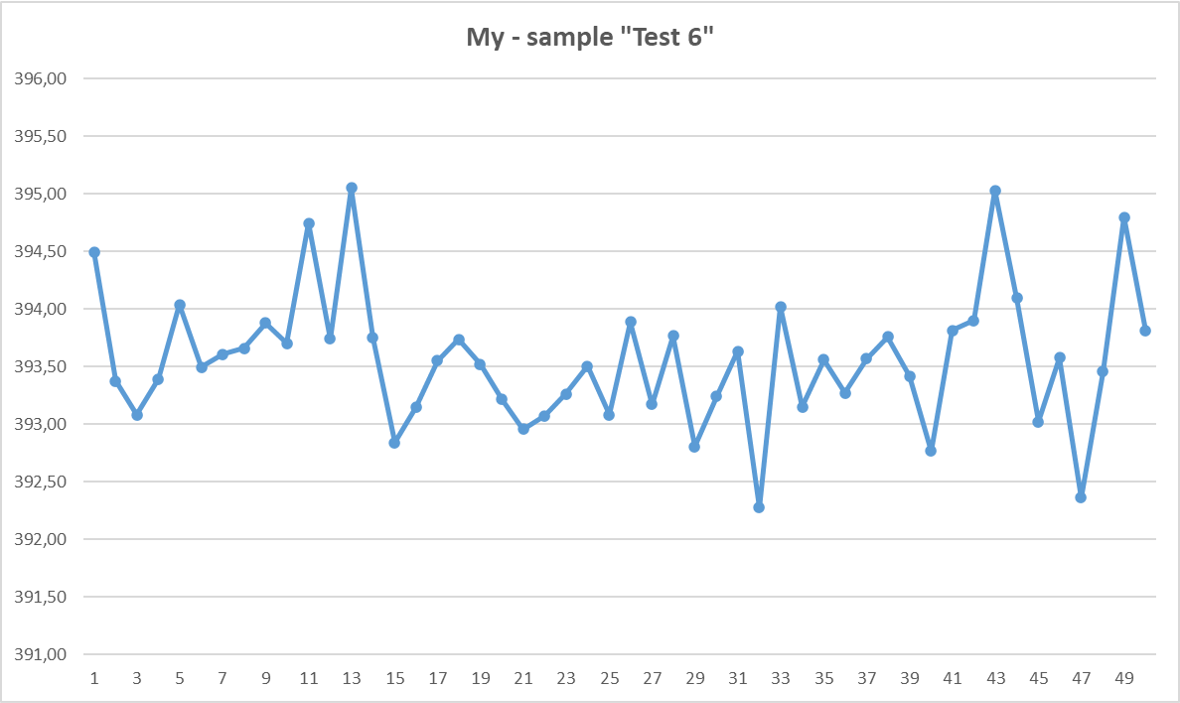
Figure 4: My of sample "Test 6 - Ultimate Black"
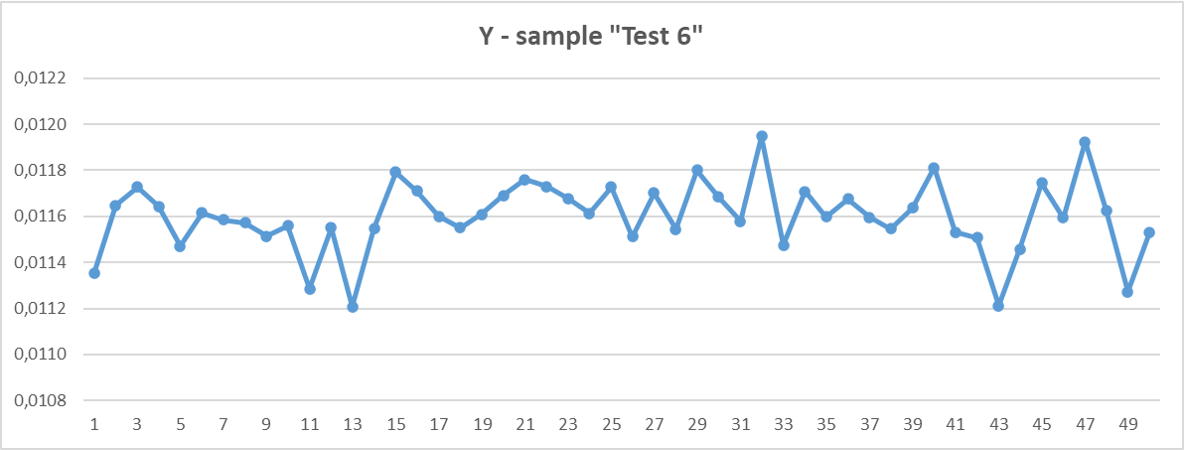
Figure 5: Y of sample "Test 6 - Ultimate Black"
The technical performance of the spectro2guide Pro is outstanding even on deep black samples with a blackness value My value close to 400. Furthermore, the spectro2guide family consisting of spectro2go, spectro2guide and spectro2guide Pro is the only spectrophotometer on the market that is capable of measuring color and gloss as well as predicting the long-term color stability of a sample. The lightfastness is analyzed by the combination of a spectrophotometer with a fluorimeter. The spectro2guide Pro opens completely new perspectives to control color harmony and guarantee color stability - no matter what color and how deep the black may be.
[1] Analytical colorimetry - Part 3: Special indices (ISO 18314-3:2015), German version EN ISO 18314-3:2018
[2] Pigmente - Bestimmung der Schwarzzahl von Pigmentrußen, DIN 55979:2020-12
[3] Schwarz - der feine Unterschied, Kai Krauss, Andrea Höpke, Markus Mahn (Orion Engineered Carbons), Farbe und Lack, 2019/01
[4] Measuring Black - but how? Kai Kraus, Andrea Höpke and Markus Mahn (Orion Engineered Carbons), European Coatings Journal, 06-2020
[5] Orion Engineered Carbons GmbH, https://superblackcoatings.com/
BYK-Gardner GmbH
April 2021